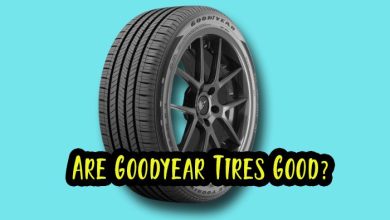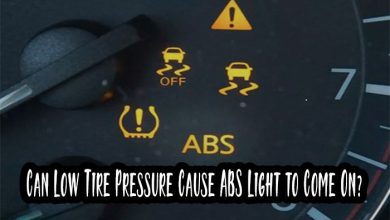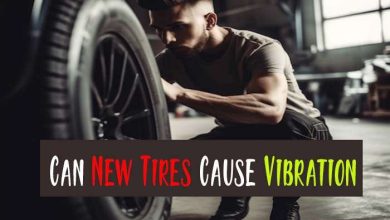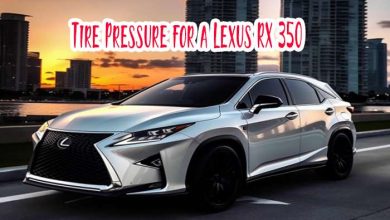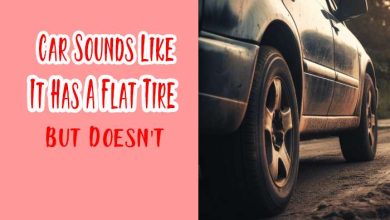Is 50 PSI Too Much for Your Tires? Perfect Tire Pressure
Hey there, fellow tire enthusiasts! If you wonder whether 50 PSI is too much for your tires, you’re in the right place. I’m your friendly neighborhood tire expert and here to break it down for you.
In this blog post, we’ll delve into the nitty-gritty of tire pressure, exploring common types of tires, the pros and cons of high tire pressure, the impact of temperature, the dangers of overinflation, and some myths that need debunking. So, let’s roll!
Yes, 50 PSI is too much for tires for most passenger cars. The recommended tire pressure for your car can be found on a sticker on the driver’s door jamb, inside of the glove box lid, or inside the fuel filler door.
The Basics of Tire Pressure
Before diving into the tire pressure world, let’s understand the basics. Your tires are not just rubber and air; they’re engineered wonders. They connect your vehicle to the road, ensuring a safe and comfortable ride.
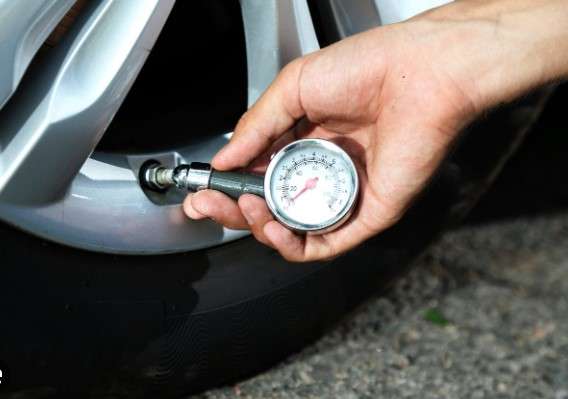
Why Tire Pressure Matters?
Proper tire pressure is crucial for several reasons:
- Safety First: The right pressure ensures that your tires grip the road properly, helping you steer, brake, and accelerate safely.
- Better Fuel Efficiency: Maintaining the correct tire pressure can improve gas mileage and reduce carbon footprint.
- Extended Tire Life: Overinflated or underinflated tires wear unevenly and might not last as long as they should.
Now that we understand the importance of tire pressure let’s address the million-dollar question:
Is 50 PSI Too Much for Your Tires?
Is 50 PSI Too Much for Tires? 50 PSI might sound like a lot, but it’s essential to remember that the ideal pressure varies depending on the type of tire.
Common Types of Tires (e.g., Passenger, SUV, Truck)
- Passenger Tires: These are commonly found on sedans and smaller vehicles. For passenger tires, 50 PSI is way too high. The recommended pressure typically falls in the range of 32-35 PSI.
- SUV Tires: SUVs and crossovers have larger tires, and their ideal pressure can range from 35 to 40 PSI. 50 PSI is excessive for most SUV tires.
- Truck Tires: Heavy-duty trucks may have recommended 50-80 PSI pressures. For them, 50 PSI can be within the recommended range, but always consult your vehicle’s manual for precise figures.
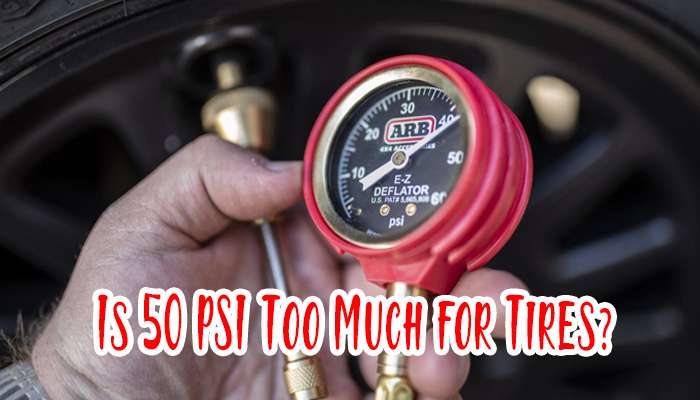
Remember, these are just guidelines, and the specific recommendations for your vehicle can be found in your owner’s manual or on the placard inside the driver’s door.
Related Post:
Should All Tires Be The Same PSI?
Rear Tires Skipping When Turning
The Pros and Cons of High Tire Pressure
Let’s explore the bright and not-so-bright sides of having high tire pressure.
The Pros
- Better Fuel Efficiency: High tire pressure can reduce rolling resistance, improving fuel efficiency and saving you money at the pump.
- Sharper Handling: Your vehicle might feel more responsive and handle better with higher pressure.
- Reduced Wear: Tires may wear more evenly, extending their lifespan.
The Cons
- Rough Ride: High-pressure tires can make your ride stiffer and less comfortable, especially on bumpy roads.
- Reduced Traction: Excessive pressure can reduce your tire’s contact with the road, potentially affecting grip and braking performance.
- Risk of Blowouts: Overinflated tires are more susceptible to blowouts, especially in hot weather.
The Role of Temperature in Tire Pressure
Tire pressure isn’t a static number; it fluctuates with temperature. Hot and cold weather can have significant impacts on your tire pressure.
1. Cold Weather
In cold weather, tire pressure drops. For every 10-degree Fahrenheit drop in temperature, your tire pressure can decrease by 1-2 PSI. So, if you’ve inflated your tires to 50 PSI during a warm summer and then winter rolls around, you might be below the recommended pressure.
2. Hot Weather
Conversely, hot weather can cause your tire pressure to rise. If you’ve inflated your tires to 50 PSI on a scorching summer day, the pressure might spike even higher on the road. This can increase the risk of a blowout.
Read Also: The Ultimate Guide to 205 55r16 Tire Pressure
The Dangers of Overinflating
Now, let’s get to the nitty-gritty of overinflating your tires. As tempting as it may be to pump them up to the max. Overinflated tires can pose serious risks.
- Blowout Hazard: When your tires are overinflated, they become more rigid. This can lead to a catastrophic blowout, particularly in hot weather or if you hit a pothole.
- Uneven Wear: Overinflated tires wear out unevenly, with the center of the tread wearing faster. This means you’ll have to replace them sooner, costing you more money.
- Harsh Ride: Your ride becomes less comfortable as the tires don’t absorb shocks and bumps as effectively.
- Reduced Traction: Overinflated tires have less contact with the road, reducing traction and stability, especially in wet conditions.
Common Myths About Tire Pressure
Some myths continue to circulate when it comes to tire pressure. Let’s bust a few of them:
- “Max Pressure is Best”: It’s a misconception that inflating your tires to the maximum PSI listed on the sidewall is the best practice. Always follow the manufacturer’s recommendations in your owner’s manual or the placard inside your driver’s door.
- “Tire Pressure Monitoring Systems Are Infallible”: While these systems are great, they’re not always 100% accurate. Regular manual checks are still essential.
- “All Tires are Created Equal”: Different types of tires have different ideal pressure ranges. Don’t assume one size fits all.
Frequently Asked Questions
What are the risks of overinflating my tires?
Overinflating your tires can lead to blowouts, uneven wear, and a harsh ride. Maintaining the recommended pressure for your specific tire type and vehicle is crucial.
Can I increase tire pressure for better gas mileage?
You can, but it’s a delicate balance. Increasing tire pressure can improve fuel efficiency, but it can also compromise safety and comfort. Follow your vehicle’s recommended pressure for the best results.
Is 50 PSI the same for all types of tires?
No, 50 PSI is not suitable for all tire types. It’s crucial to consult your vehicle’s manual or the driver’s door placard for the correct pressure specifications.
How often should I check my tire pressure?
Regularly check your tire pressure, especially before long trips and during temperature fluctuations. It’s a good practice to inspect them at least once a month.
Conclusion
The right tire pressure is crucial for safety, comfort, and fuel efficiency. It’s not a one-size-fits-all scenario, and 50 PSI is too much for most passenger and SUV tires.
Always consult your owner’s manual or the placard on your driver’s door for the recommended pressure. Don’t fall for tire pressure myths; be mindful of temperature fluctuations. Keep your tires in top shape, and you’ll enjoy a smoother, safer ride.
Reference Link
https://www.kemptonchevrolet.com/blog/how-to-find-the-correct-tire-pressure-for-your-car
Glossary
- PSI: Pounds per square inch, a unit of measurement for tire pressure.
